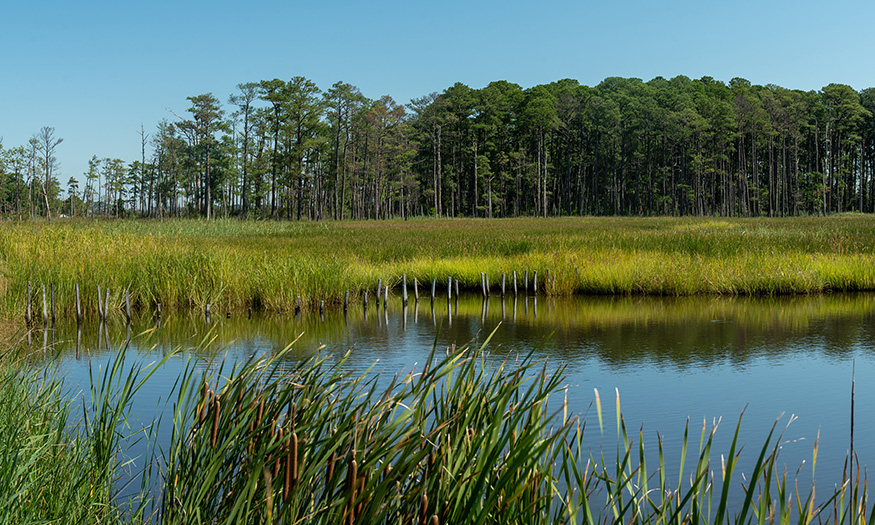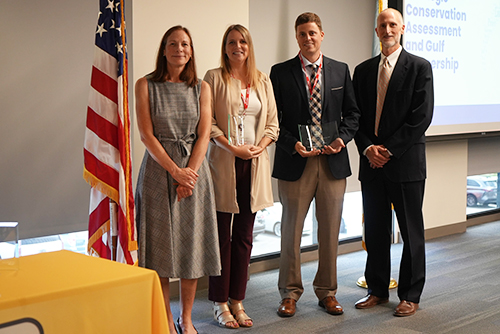MSU-developed land conservation tool recognized by U.S. Fish and Wildlife Service

Contact: Diane Godwin

STARKVILLE, Miss.—A Mississippi State University-developed tool is helping land conservation leaders make informed and effective investments in the Gulf Coast region. Now, the team behind the software is being recognized by the U.S. Fish and Wildlife Service.
The web-based software uses 26 data sets to help stakeholders determine the best areas along the Gulf Coast for land conservation, based on the environmental and socioeconomic benefits of the proposed project. The tool is being used by conservation managers to ensure federal RESTORE Act investments from the Deepwater Horizon Oil Spill maximize benefits for the five-state region that depends on a healthy gulf. Ultimately, the project has helped guide an additional 25,000 acres of acquisitions for conservation, leveraging nearly $50 million across multiple funding sources.
Researchers with MSU’s Forest and Wildlife Research Center and the Geosystems Research Institute collaborated with the Partnership for Gulf Coast Land Conservation, a network of 28 land trusts and conservation organizations, to expand the use of what the partnership calls its Strategic Vision Tool. The collaboration was recently recognized by the U.S. Fish and Wildlife Service’s Southeast Region with the Regional Director’s Award for Conservation in the conservation partnership category.
“The Gulf Partnership’s purpose is to work collaboratively to protect the Gulf’s most critical natural landscapes through supporting voluntary land and water conservation efforts in the Gulf Coast region,” said Kristine Evans, associate professor of wildlife, fisheries and aquaculture and associate GRI director, who was the project’s principal investigator. “The data-driven tool we co-developed aids the Gulf Partnership in prioritizing projects funded by their Project Assistance Fund. Ultimately, what that is doing is making sure the most important lands that need to be conserved get prioritized.”
The Gulf Partnership’s Strategic Vision Tool extends several datasets into a tiered prioritization of land areas that reflect the optimal places for Land Trust partners to invest in protecting in the region. The collaborative effort of combining each team’s resources and intellectual capital created a decision-support tool suite that makes strategic conservation planning easier.
The Gulf’s health and productivity are indelibly linked to its natural resources and to the local and national economy, according to Evans. The Strategic Vision Tool is providing stakeholders what she calls “smart science,” leveraged for a variety of projects that ensure the Gulf’s continued resiliency in the face of future threats.
“We’re excited that now it is helping inform smart decisions on how to protect the Gulf’s ecosystem and economic resources in perpetuity,” Evans said.
Researchers from MSU’s Forest and Wildlife Research Center and Geosystems Research Institute comprise the Strategic Conservation Assessment of Gulf Coast Landscapes team. The larger Strategic Conservation Assessment is part of a $1.7 million investment from the RESTORE Act.
For more on the Geosystems Research Institute, visit www.gri.msstate.edu; the Forest and Wildlife Research Center, visit www.fwrc.msstate.edu; the Department of Wildlife, Fisheries, and Aquaculture, visit www.wildlifefisheries.msstate.edu.
Mississippi State University is taking care of what matters. Learn more at www.msstate.edu.